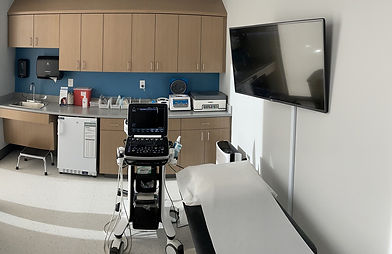Sprains, Strains, and Fractures Diagnosis & Treatment
Carolina Nonsurgical Orthopedics has onsite imaging to help diagnose tears, sprains, and fractures that don't need surgery.
-
ONSITE X-ray
-
ONSITE Ultrasound
-
ONSITE braces and splints
A sprain is an injury that occurs to a ligament or joint, a strain is a muscle injury, or “micro-tear”, and a fracture is an injury or break in a bone. Sprains, strains, and fractures can occur in any body region, and can be a scary experience for patients.



TREATMENT OPTIONS FOR SPRAINS, STRAINS, & FRACTURES IN RALEIGH
As with most orthopedic conditions, patients will often begin with a combination of physical therapy, anti-inflammatories, ice and rest (and in some cases, steroid injections).
When these methods are no longer effective, Carolina Nonsurgical Orthopedics offers the latest in cutting-edge treatments to reduce pain and get you back to the activities you enjoy. Some of these innovative alternatives to surgery include Orthobiologics and Regenerative Medicine treatments, such as:
-
Serial X-rays: We can follow most fractures that are minor without the need to see a surgeon
-
Platelet-Rich Plasma (PRP) Injections: Use your own platelets to reduce inflammation and accelerate healing.
-
Prolotherapy: Uses dextrose (sugar water) in place of steroid to reduce pain and promote healing.
-
Shockwave: A non-invasive therapy that uses impulses to treat chronic pain and repair tissue.
-
Braces and Splints: We stock many braces and splints for most of the body to protect your injuries as they heal
See the full list of conditions and treatments offered at Carolina Nonsurgical Orthopedics.
READ MORE ABOUT SPRAINS, STRAINS, AND FRACTURES
Nonsurgical Treatment of Sprains, Strains, and Fractures Sprains (Ligament Injuries) Rest: Avoid activities that stress the injured area, to prevent further damage. Ice: Apply ice packs to reduce swelling and pain (20-30 minutes every 1-2 hours during the first 48 hours). Compression: Use an elastic bandage or compression wrap to minimize swelling. Elevation: Elevate the injured area above heart level to reduce swelling. Pain Relief: Nonsteroidal anti-inflammatory drugs (NSAIDs) like ibuprofen can help control pain and swelling. Physical Therapy: Strengthening exercises and stretching to restore mobility and function once the pain reduces. Bracing or Splinting: Use of supports or braces to stabilize the injured ligament during healing. Activity Modification: Gradual return to activity with protective measures to prevent re-injury. Strains (Muscle/Tendon Injuries) Rest: Rest the injured muscle/tendon to allow healing and prevent aggravation. Ice and Heat: Ice for the first 48 hours to reduce swelling, followed by heat to relax muscles and improve blood flow. Compression: Light compression to reduce swelling. Elevation: Elevate the affected limb to help reduce swelling. Pain Relief: NSAIDs or acetaminophen for pain management. Physical Therapy: Rehabilitation exercises for strengthening and improving flexibility once pain subsides. Stretching and Strengthening: Progressive exercises to restore function and prevent future injury. Fractures (Bone Breaks) Rest and Immobilization: Use of casts, splints, or braces to keep the bone in place while healing. Ice: Ice packs for swelling and pain relief (20-30 minutes every few hours for the first 48 hours). Elevation: Elevate the injured area above heart level to reduce swelling. Pain Relief: NSAIDs or acetaminophen for pain management. Bone Stimulation: In some cases, low-intensity pulsed ultrasound or electrical bone stimulators may be used to promote healing. Physical Therapy: After immobilization, physical therapy may be needed to regain strength and mobility. Gradual Weight-Bearing: Once healing progresses, gradual introduction of weight-bearing exercises to restore function.


WHY CAROLINA
NONSURGICAL ORTHOPEDICS
-
All Providers are BOARD CERTIFIED and Specially Trained in Nonsurgical Orthopedics
-
Over 50,000+ and Counting Procedures Performed
-
Procedures Performed with Ultrasound Guidance for Accuracy and Safety
-
Local and Independent Practice That is NOT a Franchise
-
Discounts for Service Members, Teachers, and Public Servants
-
Serving Raleigh Since 2013
.png)
